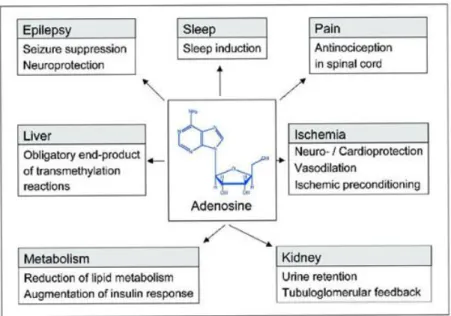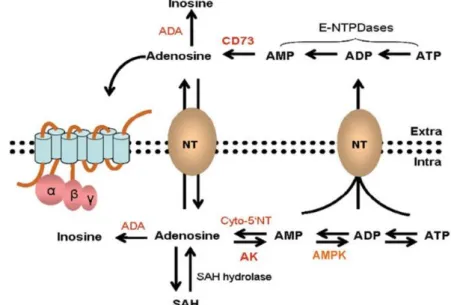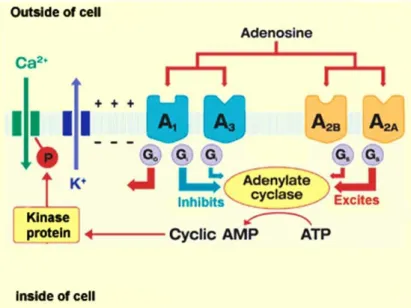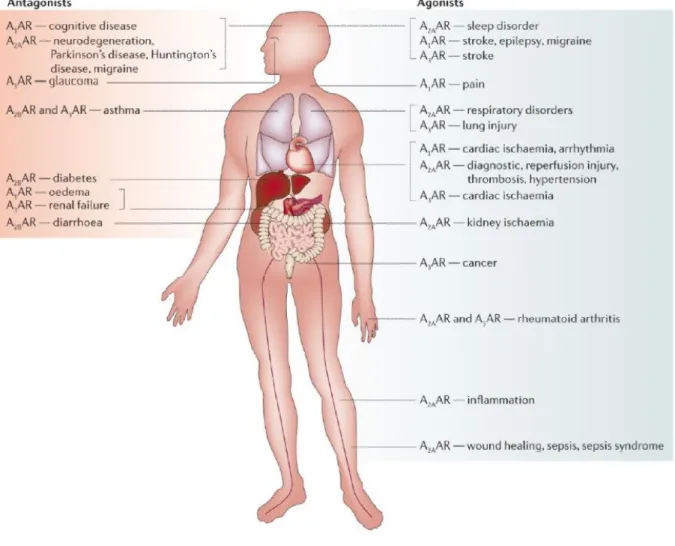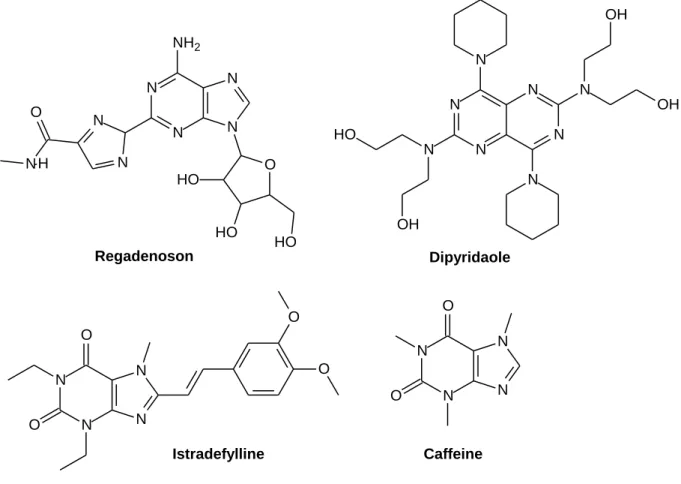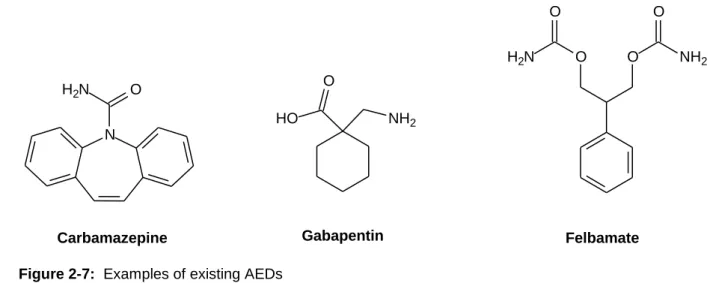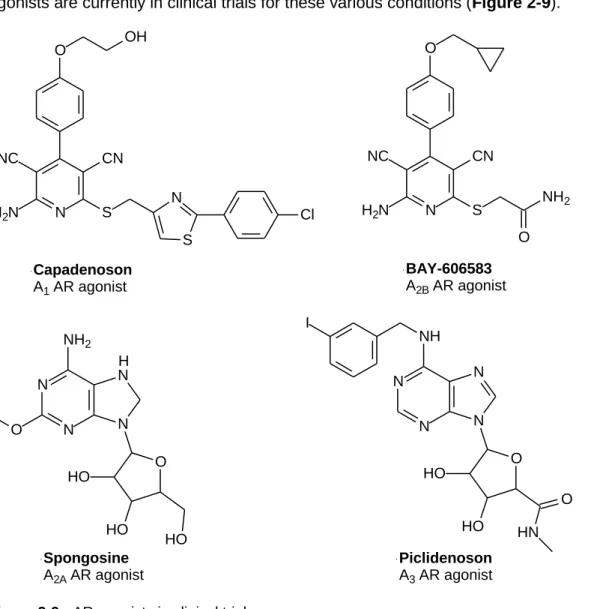Also included is a table of contributions and authors for the original article to be submitted. Design, synthesis and evaluation of amino-3,5-dicyanopyridines and thieno[2,3-b]pyridines as adenosine receptor ligands. I would like to thank the Ministry of Health and Welfare (Government of Botswana) for sponsoring me and for seeing the potential in me for further studies.
The aim of this study was to investigate the use of amino-3,5-dicyanopyridine and thieno[2,3-b]pyridine derivatives as potential A1 AR agonists. The effect of the intramolecular cyclization that occurs during the synthesis of thieno[2,3-b]pyridines from intermediates amino-3,5-dicyanopyridines on AR binding was evaluated. In general, most amino-3,5-dicyanopyridines showed higher affinity for rA1 AR (Ki <10 nM) than rA2A AR.
Due to their high selectivity for A1 receptors, amino-3,5-dicyanopyridines could be further investigated for use as A1 ligands in pharmaco-resistant epilepsy with the right structural optimizations and formulations. Key terms: Epilepsy, Antiepileptic drugs, Adenosine A1/A2A receptor agonists, Amino-3,5-dicyanopyridine derivatives, Thieno[2,3-b]pyridine derivatives, Intramolecular ring closure.
INTRODUCTION
- Background and rationale
- Problem statement and hypothesis
- Aims and objectives
- References
A2A receptors have been shown to increase epileptiform activity in the brain (Stockwell et al., 2017), and therefore A2A receptor antagonists would be expected to have anti-seizure effects (Masino et al., 2014). In a recent study, 3,5-dicyanopyridine derivatives were found to show affinity for ARs (Dal Ben et al., 2019). Some are selective progesterone receptor agonists (Wang et al, 2009), and factor 2-kinase (eEF2-K) inhibitors (Lockman et al, 2010) as well as intermediates in the synthesis of non-nucleoside inhibitors of human cytomegalovirus and related herpes polymerases (Schnute et al., 2005).
About a third of patients with epilepsy are not adequately treated with currently available antiepileptic drugs (Swiader et al., 2014). According to (Masino et al., 2014), adenosine-based therapy has the ability to treat all types of seizures; whether metabolic, genetic or of unknown origin. These adenosine-based strategies could shed light on desired therapies that reduce seizures while ameliorating psychiatric comorbidity (Masino et al., 2014).
New benzofuran derivatives with selective A2A receptor antagonist properties have shown good efficacy in catalepsy (Saku et al., 2010). Another study (Janse van Rensburg et al., 2019) showed that indanone derivatives are potent and selective A1 and A2A receptor antagonists for the potential treatment of neurological conditions.
![Figure 1-2: Proposed modification on the thieno[2,3-b]pyridine scaffold](https://thumb-ap.123doks.com/thumbv2/pubpdfnet/10398171.0/20.892.361.804.89.263/figure-1-2-proposed-modification-thieno-pyridine-scaffold.webp)
ADENOSINE AND EPILEPSY
- Role of adenosine in the central nervous system
- Adenosine receptors as therapeutic targets
- Epilepsy
- Cellular mechanisms of seizure generation
- Treatment of epilepsy
- Pharmaco-resistant epilepsy
- Role of adenosine in epilepsy
- Development of adenosine receptor agonists
- Thienopyridines
- Synthetic approaches for target compounds
- Summary
- References
A low level of expression of A2B and A3 ARs was detected in the brain (Stockwell et al., 2017). Short-acting parenteral adenosine is used clinically for the treatment of supraventricular tachycardia (Jacobson et al., 2019b). Others include the A2A AR agonist Regadenoson (approved as a coronary vasodilator) and the A2A AR antagonist Istradefylline (KW-6002) as an anti-Parkinson drug (Dal Ben et al., 2019).
All these lead to excessive excitability of the neurons that can cause a seizure (Yardimoglu et al., 2012). Moreover, pronounced side effects may limit the optimal utilization of the available AEDs (Gouder et al., 2003). Adenosine is a long-known endogenous anticonvulsant that effectively inhibits excitatory transmission in the brain (Rombo et al., 2018).
There are six isomeric thienopyridine structures characterized by different cancellation modes: thieno[2,3-b]pyridine, thieno[3,2-b]pyridine, thieno[2,3-c]pyridine, thieno[3,2-c] pyridine, thieno[3,4-b]pyridine and thieno[3,4-c]pyridine (Litvinov et al., 2005) (Figure 2-15). The high pharmacological potential of thienopyridine derivatives made these compounds a privileged platform (Litvinov et al., 2005).
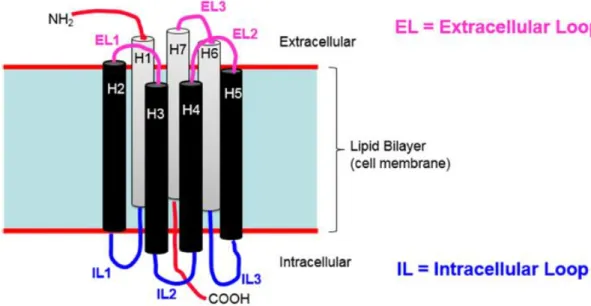
ORIGINAL ARTICLE TO BE SUBMITTED
The development of these agonists has been limited by the essential requirement of preserving the ribose moiety of adenosine for agonist activity. Several functional groups were substituted at the meta and para positions of the 4-phenyl ring (R2) and several aryl groups were substituted at position 2 (Figure 2). The structure activity relationship (SAR) of the synthesized compounds was evaluated in relation to the A1 and A2A AR affinity.
The synthesis of amino-3,5-dicyanopyridine derivatives (intermediates) 6a–6p was carried out by the multicomponent condensation of malononitrile with hydrogen sulfide, the corresponding aldehyde, and the corresponding halide in the presence of triethylamine as a catalyst [45]. Recycling of the latter with the action of alkalis (potassium hydroxide, dimethylformamide) leads to pyridine-2-thiolate (5). The presence of a carbonyl compound at the aryl position appears to influence the intramolecular cyclization of the intermediates compared to aryl halides.
One of the key starting materials for compounds 6q–6s , 4-(chloromethyl)-2-(4-chlorophenyl)thiazole was synthesized by refluxing a mixture of 4-chlorobenzothioamide and 1,3-dichloroacetone in absolute ethanol for 2 h (Scheme 3 ) [50]. Modifications were made to the R2 and aryl positions of the test compounds to assess how different substituents might affect rA1 and rA2A AR binding affinity as well as selectivity. Overall, the presence of the 3-methoxyphenyl substituent resulted in increased affinity for rA1 AR, but had no effect on rA2A AR affinity as shown by 6c vs 6b and 6o vs 6l.
Poor water solubility of compound 6q can be attributed to its high molecular weight and the presence of lipophilic halogen (Cl) as part of. -21-A5) and was performed in accordance with the guidelines of the South African National Standard (SANS) document (Care and use of animals for scientific purposes). The protein concentration of rat brain tissue was determined according to the Bradford protein assay using bovine serum albumin as a reference standard [79].
Sigmoidal dose-response curves, from which IC50 values were calculated, were obtained by plotting the specific binding against the logarithm of the concentrations of the test compounds. Subsequently, the IC50 values were used to calculate the Ki values for the competitive inhibition of [3H]DPCPX (Kd = 0.36 nM) against rat whole brain membranes and [3H]NECA (Kd = 15.3 nM) against rat striatal membranes at test connections using the Cheng-Prusoff equation. Investigation of the synaptic target of a new putative antiepileptic drug: Modulation of the excitatory transmission in the hippocampus: University of Lisboa (PhD thesis); 2016.
Facilitating a student review of the chemistry of nitrogen-containing heterocyclic compounds and their characterization through the multistep synthesis of thieno[2, 3-b] pyridine derivatives. Preclinical evaluation of the first A1 adenosine receptor partial agonist radioligand for positron emission tomography imaging.
![Fig. 2 Synthesis of thieno[2,3-b]pyridine derivatives from lead compounds and modification on the thieno[2,3]pyridine scaffold](https://thumb-ap.123doks.com/thumbv2/pubpdfnet/10398171.0/65.892.124.798.96.298/synthesis-thieno-pyridine-derivatives-compounds-modification-pyridine-scaffold.webp)
CONCLUSION
In vitro radioligand binding assays were performed on all test compounds to determine affinity and/or activity at rA1 and rA2A ARs. Details of the results obtained during compound characterization, purity determination, radioligand binding assays and in silico evaluation can be found in the Research Supplementary Material, which also contains a summary of the (unsuccessful) ring closure attempts made to synthesize thieno[2,3 . ]pyridine derivs. The challenges encountered during synthesis are that the last stage of the multicomponent reaction system did not complete to yield thieno[2,3-b]pyridine derivatives for almost all reactions except the one that yielded compound 7a.
Modifications of several techniques from the literature were applied to optimize the reaction conditions for intramolecular cyclization of the amino-3,5-dicyanopyridines (see Supplementary Material). Observation shows that only compounds with a carbonyl group (C=O) at the aryl position succeeded in targeting the thieno[2,3-b]pyridine derivatives. This was in agreement with the available literature implying that a carbonyl component has a major influence on the intramolecular cyclization of the 3,5-amino-dicyanopyridines to produce thieno[2,3-b]pyridines.
A follow-up study will be needed to investigate structure and reaction optimizations for the synthesis of this scaffold. Assessment of structure-activity relationships (SAR) of all test compounds, which determine AR-ligand interactions at rA1 and rA2A receptors, was performed. There was a significant loss of binding affinity for both rA1 and rA2A receptors from open ring structures (amino-3,5-dicyanopyridine derivatives) to closed ring structures (thieno[2,3]pyridine derivatives).
The poor activity of thieno[2,3-b]pyridines could be attributed to the molecular rigidity that occurs during cyclization. The good binding affinity of this compound (<100 nM) against rA1 ARs indicates that it is possible to design and develop thieno[2,3-b]pyridine derivatives as AR ligands. For amino-3,5-dicyanopyridines (6a-6s), the overall best results were obtained in the rA1 AR binding assays with most compounds showing high affinity for this receptor (rA1Ki values of <10 nM).
The latter compound together with 6b showed better affinity for rA2A than the other test compounds with rA2AKi values of 48.3 nM (6c) and 48.0 nM (6b), respectively, but remains selective for rA1 AR. None of the compounds raised structural alerts when screened for potentially problematic substructures, and in general all test compounds performed well in the drug-likeness test (i.e., the possibility that they are. In conclusion, although the number of synthesized thieno[2,3-b ]pyridine was not suitable for comprehensive evaluation, the good binding of compound 7c to rA1 AR (Ki = 61.9 nM) inspires further investigation of this framework as an AR ligand.
A follow-up study, in particular aimed at optimizing the synthesis method for thieno[2,3-b]pyridine derivatives, is recommended. Ki values in the presence of GTP GTP shifts = Ki values in the absence of GTP.
![Figure 4-1: Best selective rA 1 ligands of the 3,5-amino-dicyanopyridines and thieno[2,3-b]pyridines In silico evaluation of the test compounds highlighted bioavailability issues for both oral and blood brain barrier permeability due to the high polari](https://thumb-ap.123doks.com/thumbv2/pubpdfnet/10398171.0/105.892.176.741.731.997/selective-dicyanopyridines-pyridines-evaluation-compounds-highlighted-bioavailability-permeability.webp)
